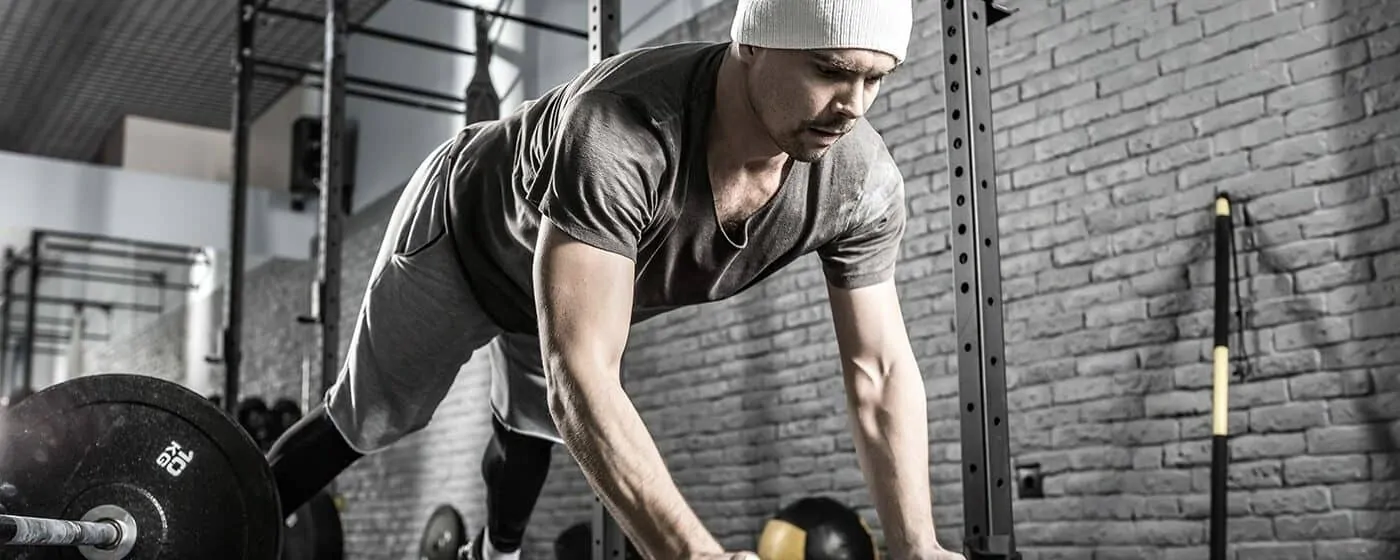
[vc_row][vc_column][vc_column_text]When you hear about having a “strong core,” you might think of six-packs and Men’s Health magazine covers. No disrespect to those shirtless celebrities, but they’re probably fooling a lot of people into thinking that washboard abs automatically equate to a strong core.
In reality, there are actually a few good reasons to focus on working your core, as opposed to only trying to look good on the beach: It’s essential for having proper movement, good posture, and preventing injuries. Specifically, your core protects your spine.
To start, let’s understand what exactly the core is: beyond the (frankly overrated) rectus abdominis, it’s also comprised of the transverse abdominals, multifidus, diaphragm, and pelvic floor. A strong core will keep your spine braced and neutral. Simply put, your spine is in a braced neutral position when your head, shoulders, ribcage, and pelvis are in alignment.
Though some dynamic movements such as the snatch or muscle-up require spinal extension or flexion, the beginning and end of any movement requires a braced neutral spine. On a more basic level, closed kinetic chain movements – compound movements in which your hands or feet remain fixed to a stationary object – all require a braced neutral spine.
These exercises are the essentials of functional fitness and all of them require a strong core. Consider the following examples and how they apply in other areas of life outside the gym:
- The push-up is an upper body exercise requiring you to plant your hands on a stationary surface and use your triceps, biceps, deltoids, and pectoralis muscles to push off until your arms are fully extended. A braced core is required for the duration of the exercise.
Day-to-day something as simple as opening a door or pushing a shopping cart requires the same movement pattern as a push-up.
- The squat is a lower body exercise during which your feet remain planted to the ground while weight is affixed to your back (back squat), shoulders (front squat), or overhead (overhead squat). A weak core will cause you to open your kinetic chain and allow your spine to roll forward – a recipe for injury.
More commonly, walking up stairs or crouching down to pick up a coin are both slight variations on this same movement pattern.
- The deadlift is another functional movement that can only be accomplished safely with a braced neutral spine. As you lift the weight from the ground, a strong core supports your spine and protects it from shearing forces and serious potential injury.
Aside from putting heavy plates on a barbell, picking up a box or moving furniture are both similar to the deadlift.
If you’re still not convinced on the importance of a strong core and functional movement, check out the research. One recent study of 433 firefighters revealed that injury rates were reduced by 42 percent through a regimen of core strengthening and functional movement enhancement.
Am I Keeping a Braced Core?
One way to check that your core is braced and neutral is with Kelly Starrett’s Two-Hand Rule:
- Position your right-hand palm down in the center of your sternum (center of your ribcage).
- Position your left hand, also palm down, at the top of your pelvic bone (2-3 inches below your bellybutton).
- If both hands are parallel, your spine is in a neutral position.
Did you keep a neutral spine as your read this article? Let us know in the comments.[/vc_column_text][/vc_column][/vc_row]